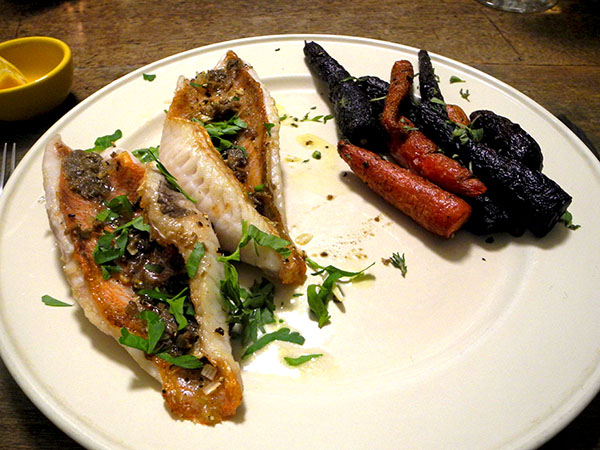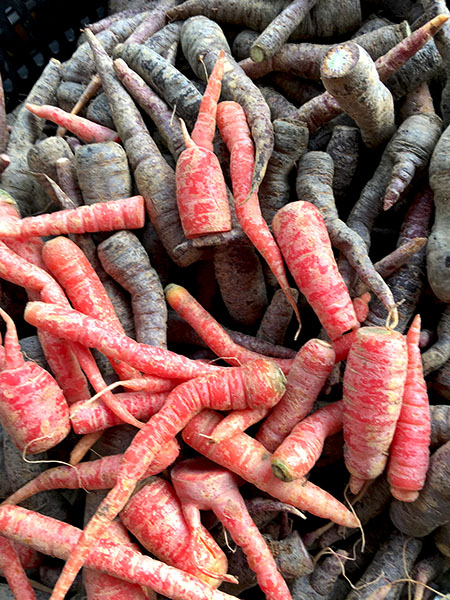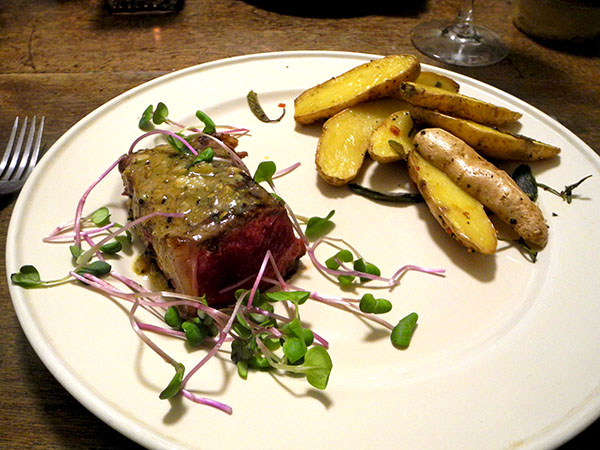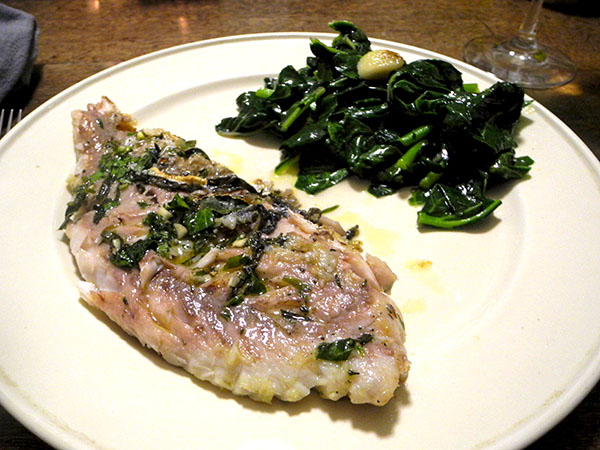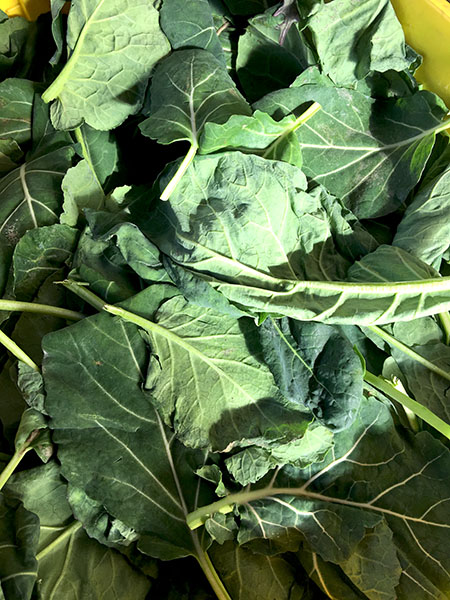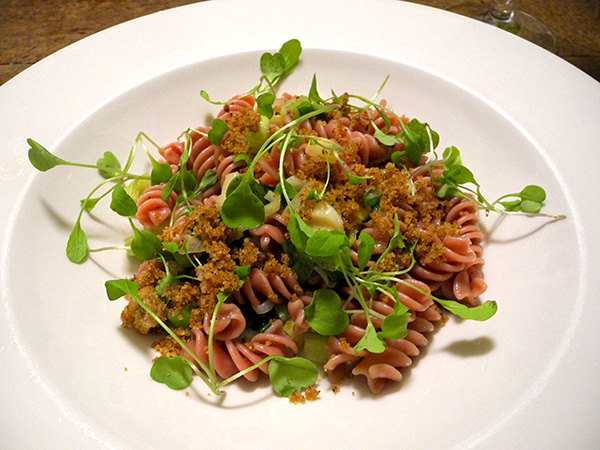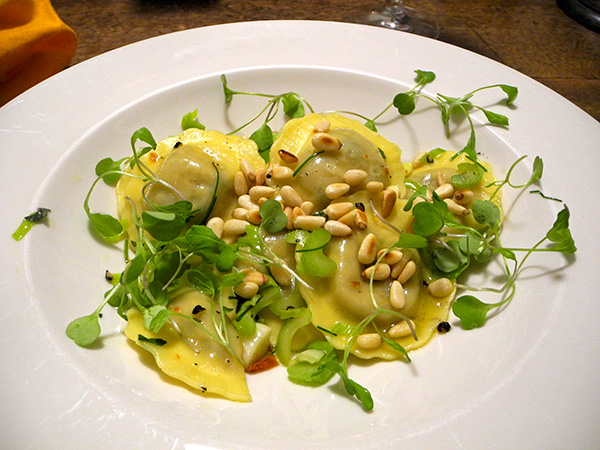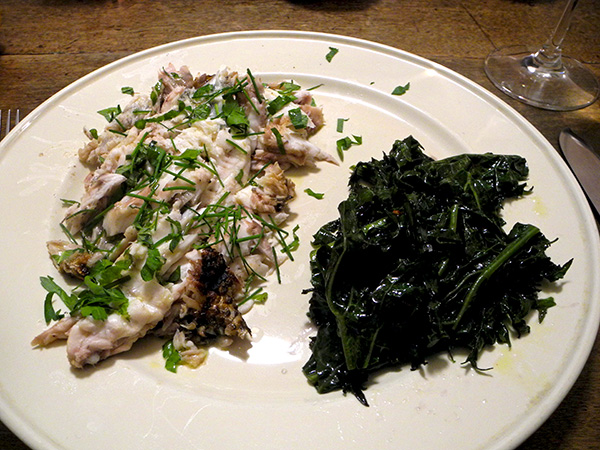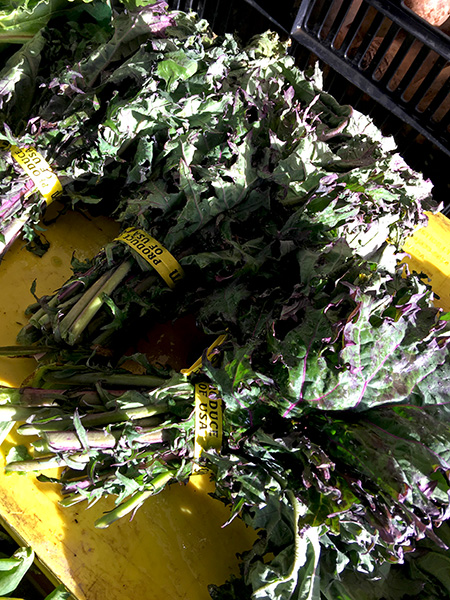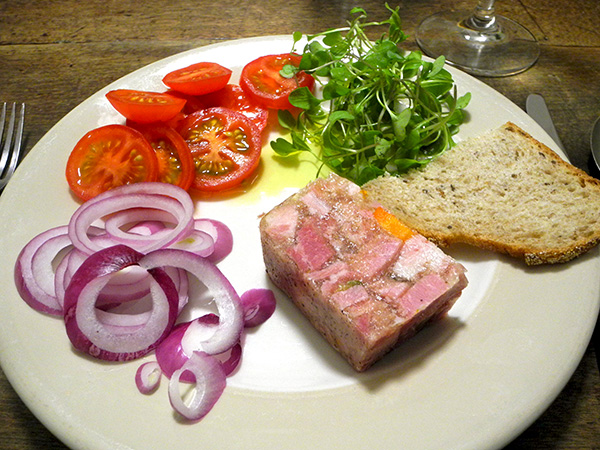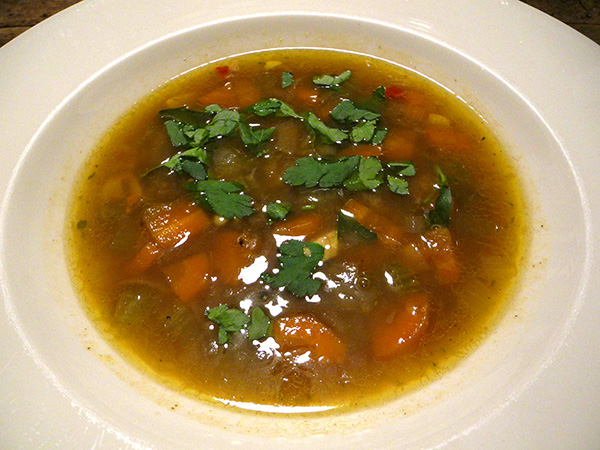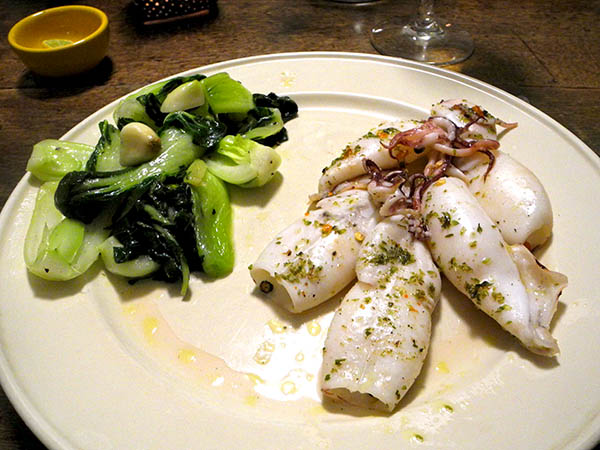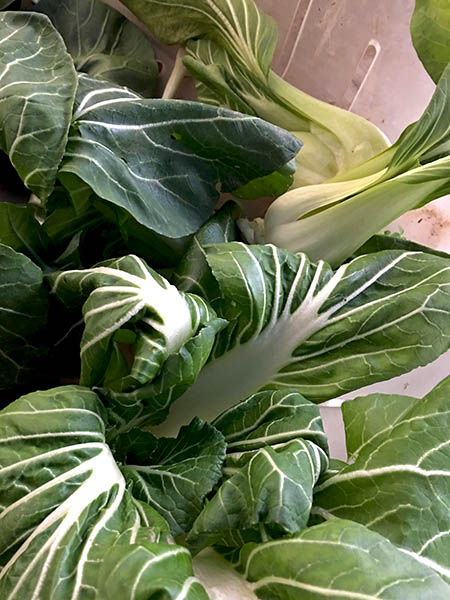
[aka crispy pork knuckles, potato dumplings, red cabbage]
Somewhere, while doing research for this meal, I came across a reference to a Bavarian proverb intended to reassure a cook worried about how large a knuckle to use: ‘‘S is ned, wia grous’ s is, aba wia guad’ s is.‘, it goes, at least as I translated it from the English into Boarisch, with some online help. I think the English went something like, ‘It’s not how big it is, but how good it is’.
Barry and I both had numerous occasions to vouch for the goodness of Schweinhaxe, and we’ve never had one that was too small – or too large – and they’ve all been very good.
The difference between Eisbein and Schweinshaxe may not always be hard and fast (puns intended), but basically Eisbein, often associated with Berlin, is a cured or smoked (gepökelt oder geräuchertes) knuckle, and Schweinshaxe, very big in Bavaria, is fresh pork. They are both deceptively and incredibly delicious.
I’ve cooked pork knuckles before, in that case, 2 years ago, it was smoked Eisbein (beziehungsweise, geräucherte Schweinshaxe); last night I tried my hand at ‘Schweinshaxn‘ (the Bavarian spelling).
I combed my books, paper files, and the internet in order to assemble a working model of a recipe. I ended up using most of that included in the large compendium, ‘Culinaria Germany‘.
We were both delighted with the result, but I should leave the cook (me, and whoever) with a lesson and a suggestion:
- At the last minute I realized that the only beer I had on hand wasn’t a dark brew, which would be preferred in Bayern, but our nor’easter persuaded me not to go fetch another, so I went with the Pavoni, which may have been waiting for its star turn.
- I was very concerned ahead of time with getting the skin crispy, but only succeeded partially; with hindsight, I believe that finishing the knuckles on a grill pan might have produced the ideal result.
I’ve included images of the vegetables in the pan after the meat had been browned, and another which shows the hocks returned to the pan, before being placed in the oven.

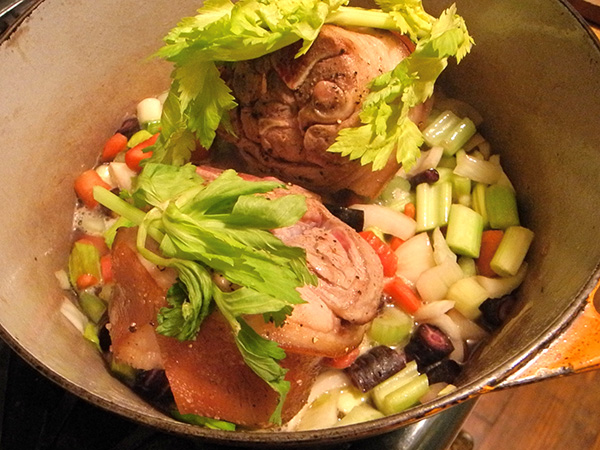
- two 24-ounce pork knuckles from Flying Pigs Farm, left sitting upright inside the refrigerator overnight, their sides left bare, tops covered with plastic wrap, removed the next day, rinsed, patted dry, the skin scored to the extent possible (it’s very tough, especially after drying out some), to increase the chances of it becoming crispy, rubbed on all surfaces with the open side of a large clove of garlic from Tamarack Hollow Farm and a mixture of sea salt and freshly-ground pepper, toothpicks inserted to help keep the skin and meat lined up together, seared thoroughly in veal lard (rendered months ago from fat purchased from Consider Bardwell Farm and then frozen), inside a very heavy enameled cast iron dutch oven, removed, and diced soup vegetables (onion from Tamarack Hollow Farm, celery from Foragers, ‘Purple Haze’ carrots from Norwich Meadows Farm, young leeks from Lucky Dog Organic Farm), some Lucky Dog celery greens, sprigs of Italian parsley from Eataly, 2 Sicilian bay leaves from Buon Italia, and half a dozen bruised juniper berries were added to the pan, stirred and sautéed briefly, followed by one cup of fresh water, the pot covered with its self-basting lid, placed inside a preheated (325º F) oven, for about 2 1/4 hours, basting every half hour with at least half a bottle of beer (ideally any dark beer, but I only had a light Pavoni), the pot removed from the oven, which was turned up to 450º, the Haxen removed to a smaller, low-sided, oval enameled cast iron pan and returned to the oven, and later the broiler, to become crispy (watching carefully all along), while the remainder of the beer was added to the large Dutch oven in which the pork had been braising with the vegetables, the uncovered pot boiled over a high flame until the liquid had reduced somewhat, when it was seasoned with salt and pepper, strained through a sieve into a warm sauceboat (the vegetables put aside and retained for use in another meal), the knuckles arranged on plates and coated with some of the sauce, the remainder placed on the table
If you think you’d like a tasty savory carbohydrate with the texture of mom’s sponge cake, you’ll love Kartoffelklöße (also Kartoffelknödel) as much as we do. They may also be one of the easiest side dishes ever, as long as you have access to a great market like Schaller & Weber.
- four frozen Kartoffelklöße (potato dumplings) from Schaller & Weber, defrosted the day before, boiled for about 12 minutes in salted water, drained and arranged on the plates, some of the Schweinshaxn sauce ladled on top
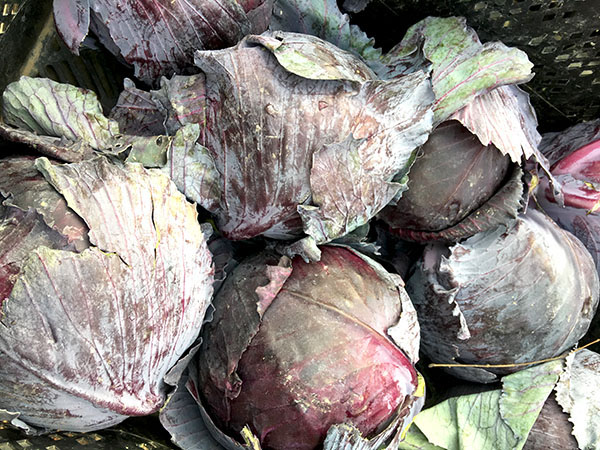
Here I’ve used the image of cabbage in the greenmarket that appeared on this blog once before, but then it was to illustrate a post about a meal which incorporated only a leaf or two. In fact I had bought this head almost a full month ago (winter vegetables, while limited in their variety, are often very forgiving about home storage issues), so the picture probably deserved a revisit.
For the red cabbage I began with a recipe published by Martha Stewart because I didn’t have enough time for the more authentic Mimi Sheraton German version, however I found myself sweetening it near the end (to relate better to the Bavarian elements in the rest of the meal)
- a little veal and duck fat from earlier dinners, heated to medium-high heat in an enameled cast iron pan, then one 24-ounce red cabbage from Hoeffner Farms, finely-sliced, and several small roughly-chopped shallots from Norwich Meadows Farm (and one small ‘red wing’ onion from Keith’s Farm) added and cooked, stirring occasionally, until the cabbage had softened slightly (about 15 minutes), after that some salt, lemon juice, local apple cider vinegar from Face Farm were added, plus a sprinkling of freshly-ground black pepper, the heat reduced and the mixture cooked about 10 minutes more, or until the cabbage was wilted and the shallots softened, a little turbinado sugar added and stirred in, followed by a few tablespoons of a mix of raisins, and some red current jelly, all stirred into the pan
